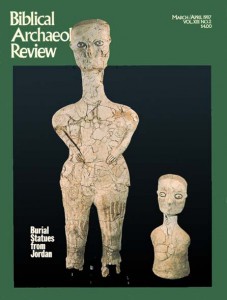At Arad in the Negev desert Israelite kings early on built a fortress to protect the trade route between Philistia and Elath on the Red Sea. Destroyed and rebuilt over the centuries, the fortress suffered a massive destruction in the sixth century B.C. when the Babylonians overran and destroyed Judah. When archaeologists excavated the series of fortresses, each built atop the prior one, they found an archive of Hebrew letters from the files of one of the last commanders of the fortress. The letters vividly reflect life at the time and the precarious situation of the threatened fortress. The archaeologists also found the only temple to the Hebrew God Yahweh ever uncovered from antiquity. It was found complete with a niche, standing stones reminiscent of Solomon’s Temple in Jerusalem and a large altar for animal sacrifices in the courtyard. In “Arad—An Ancient Israelite Fortress with a Temple to Yahweh,” archaeologists Ze’ev Herzog, Miriam Aharoni and Anson F. Rainey chronicle the fortress’s excavation and its extraordinary finds.

Herzog emigrated to Israel from Buchara, Russia, at the age of seven. Now senior lecturer in archaeology at Tel Aviv University, he has excavated at Beer-Sheba, Megiddo, Hazor, Tel Michal and Tel Gerisa, as well as Arad. He previously reported for BAR on “Beer-Sheba of the Patriarchs,” BAR 06:06.
Already a library member? Log in here.
Institution user? Log in with your IP address.

